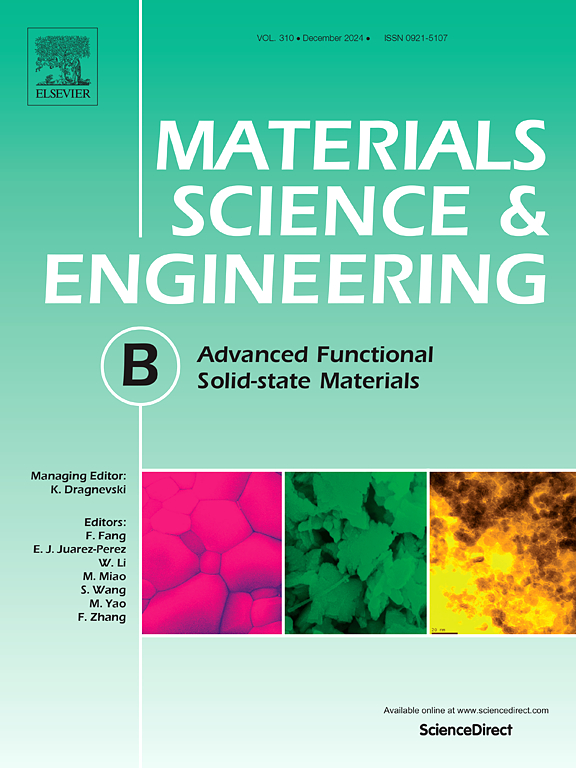Study on structural, morphological, and spectral properties of LiMPO4:Eu3+, B3+ (M = Zn, Sr) phosphors and latent fingerprint applications
IF 3.9
3区 材料科学
Q2 MATERIALS SCIENCE, MULTIDISCIPLINARY
引用次数: 0
Abstract
Boron influences the melting point, crystallization, and both the optical and structural characteristics of ceramic materials. The effect of boron on the structural, morphological, and spectral properties for LiMPO4:xEu3+, yB3+ (where M = Zn or Sr and x = 3 mol%, y = 0–100 mol%) phosphors was investigated using materials fabricated with the solid-state method. In XRD results, LiZnPO4:Eu3+, B3+ series showed a single-phase structure up to 100 mol%, while LiSrPO4:Eu3+, B3+ samples exhibited a low monoclinic phase at low concentrations. In SEM micrographs, the flux effect of boron caused growth in LiMPO4:Eu3+, B3+ (M = Zn, Sr) grains sizes. As the B3+ concentration increases, PL emissions for both phosphor series increased up to 100 mol%, and the luminescence intensities increased over 8 times. Judd-Ofelt (JO) parameters (Ω2, Ω4) showed a slightly increasing trend for LiZnPO4:Eu3+, B3+, whilst the change in Ω2 and Ω4 parameters was limited for LiSrPO4:Eu3+, B3+ series. As the B3+ concentration increased, the observed lifetime (τ) of LiZnPO4:Eu3+, B3+ with a bi-exponential decay decreased, whereas the τ lifetime for LiSrPO4:Eu3+, B3+ with a mono exponential decay increased. The quantum efficiencies for LiSrPO4:Eu3+, B3+ phosphors varied between 89.83 %–96.78 % and exhibited approximately twice the efficiency of LiZnPO4:Eu3+, B3+. The usability of optimized LiMPO4:xEu3+, yB3+ (where M = Zn, Sr and x = 3 mol%, y = 100 mol%) phosphors was investigated for latent fingerprint applications.
求助全文
约1分钟内获得全文
求助全文
来源期刊

Materials Science and Engineering: B
工程技术-材料科学:综合
CiteScore
5.60
自引率
2.80%
发文量
481
审稿时长
3.5 months
期刊介绍:
The journal provides an international medium for the publication of theoretical and experimental studies and reviews related to the electronic, electrochemical, ionic, magnetic, optical, and biosensing properties of solid state materials in bulk, thin film and particulate forms. Papers dealing with synthesis, processing, characterization, structure, physical properties and computational aspects of nano-crystalline, crystalline, amorphous and glassy forms of ceramics, semiconductors, layered insertion compounds, low-dimensional compounds and systems, fast-ion conductors, polymers and dielectrics are viewed as suitable for publication. Articles focused on nano-structured aspects of these advanced solid-state materials will also be considered suitable.
 求助内容:
求助内容: 应助结果提醒方式:
应助结果提醒方式:


